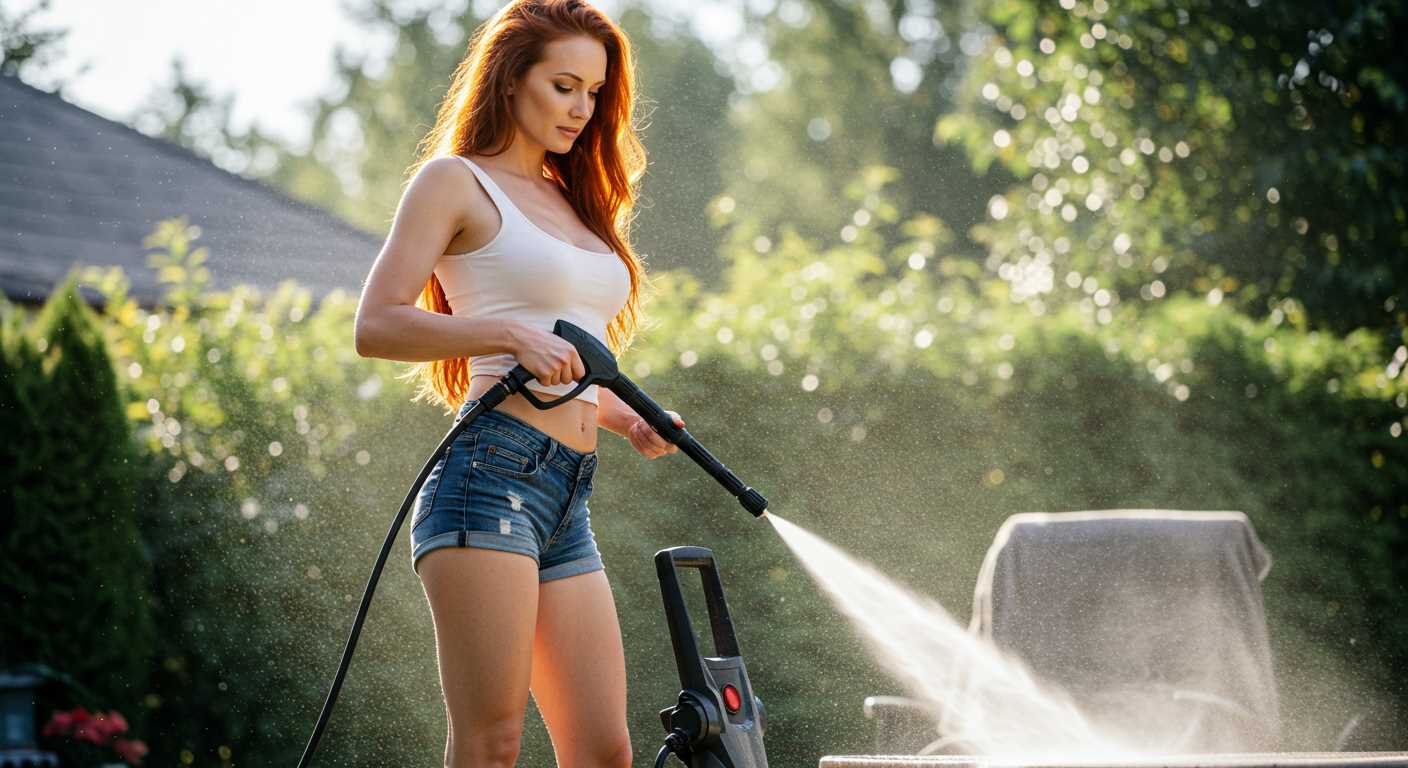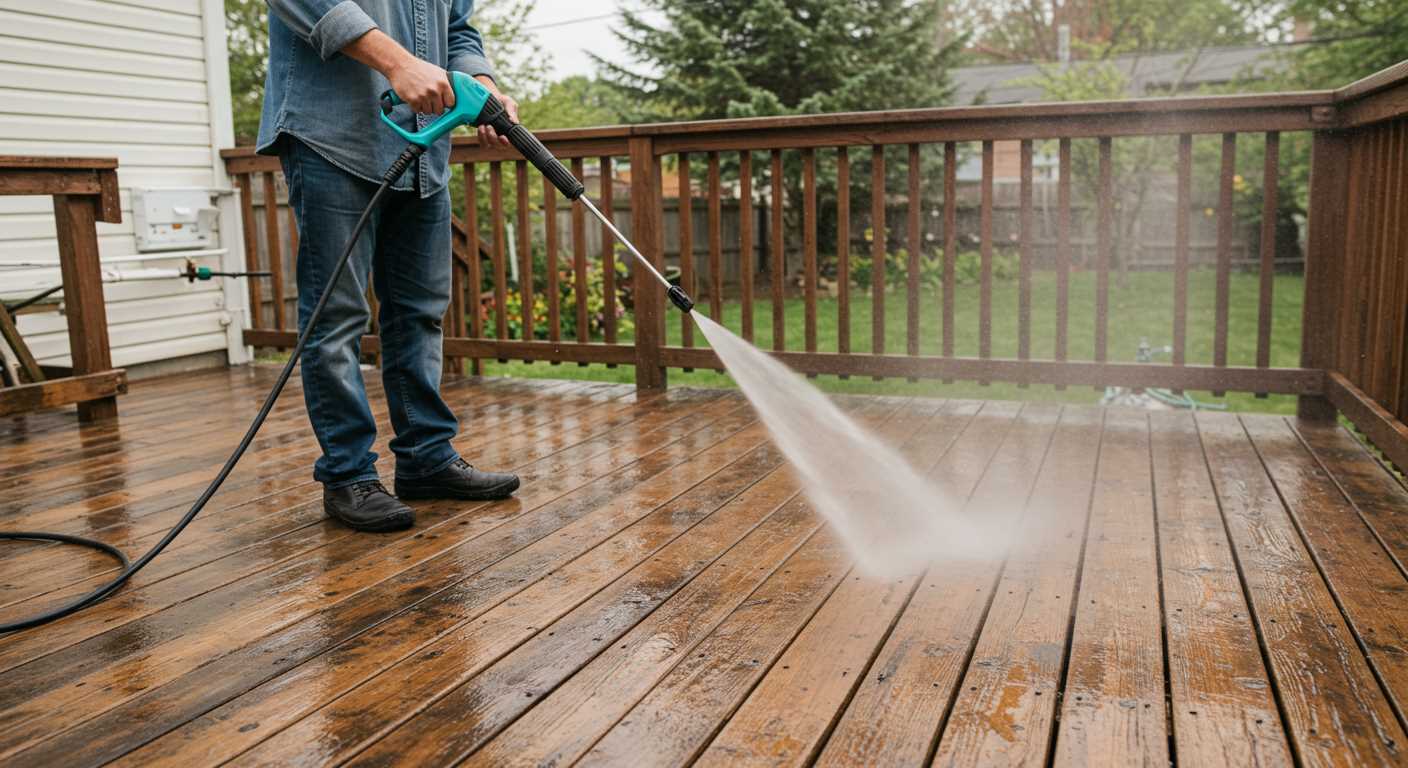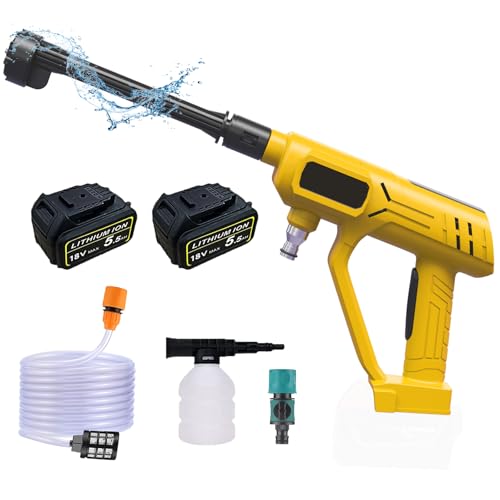



Begin by inspecting the water supply. Ensure the hose is free of kinks and the faucet is fully open, allowing a steady flow. A restricted water source can lead to performance issues.
Next, examine the filter located at the water inlet. Clean or replace it if it appears clogged with debris or sediment. A clear filter is essential for optimal functionality.
Check the spray wand and nozzle for blockages. Remove any accumulated dirt or grime that could hinder the flow. Swapping out the nozzle for a different size can also help determine whether it’s the culprit.
I recommend inspecting the connections, including the hose and trigger gun. Look for leaks or cracks that may cause a loss of pressure. Tightening fittings or replacing damaged components often resolves these issues.
Lastly, evaluate the device’s motor and pump assembly. Listen for unusual noises that could indicate internal problems. If the pump is malfunctioning, consult the manual for troubleshooting steps or consider professional service.
Understanding the Common Causes of Low Pressure
Firstly, check for any blockage in the nozzle. Debris can accumulate, reducing the flow and output significantly. Clean or replace the nozzle if necessary.
Inspect the hose for kinks or abrasions. Any twist or damage can restrict water flow. Ensure the hose is positioned correctly and is free of obstructions.
Examine the water source. Confirm that the inlet is delivering adequate flow. If the tap isn’t fully open or the supply is weak, efficiency will drop.
Look at the pump’s condition. Signs of wear or damage can lead to insufficient performance. If the pump is faulty, consider a professional repair or replacement.
Testing the inlet filter is essential. If it’s clogged, clean or replace it to enhance water intake.
- Ensure the unit has no air in the lines.
- Check for loose connections that might allow air to enter the system.
- Inspect the detergent injection system; it can alter flow rates if malfunctioning.
Lastly, review the pressure settings. Ensure they are correctly adjusted according to the job requirements. Incorrect settings can severely impact output strength.
Checking the Water Supply for Blockages
Inspect the hose connected to the water source for any twists or kinks that could restrict flow. A smooth, unobstructed water path is crucial. Check screen filters at the inlet of the hose and at your water supply; clean or replace these filters if they are clogged with debris.
Ensure that the water tap is fully open. Low water supply can lead to inadequate flow. Test the water supply by filling a bucket; if it takes too long to fill, the source may be the issue. If available, try a different water supply to verify the problem.
Consider the diameter of your hoses. Using narrower hoses can limit flow. Opt for hoses with a larger diameter to enhance water delivery. Additionally, avoid using extended lengths of hose if possible; longer hoses can cause significant pressure loss.
If you’re using a rainwater tank or well, ensure the intake and filters are free of obstructions. These sources can accumulate sediment that affects overall performance. Regular maintenance of these systems will prevent build-up over time.
Lastly, assess the quality of the water. Hard water can lead to mineral deposits that block hoses and connectors. If this is a recurring issue, investing in a water softener may be beneficial for your equipment’s longevity.
Inspecting the Equipment’s Filter and Hose
Firstly, examine the filter component situated at the water inlet. A clogged filter can significantly impede water flow, leading to reduced output. To inspect it, detach the filter and rinse it under clean water. Check for any debris or mineral buildup that may require scrubbing or replacement.
Hose Examination
The next step involves analyzing the hose. Look for signs of kinks, cracks, or severe abrasions, as these can obstruct water movement. Roll it out fully to inspect its length and ensure it’s free of knots or blockages. Open the hose by disconnecting both ends and flushing it with water to clear any potential debris inside.
Checklist for Maintenance

| Task | Frequency |
|---|---|
| Inspect filter for debris | Every use |
| Clean or replace filter | Monthly |
| Check hose condition | Every use |
| Flush hose | Monthly |
Regular inspection and maintenance of these components will ensure optimal functionality and prolong the lifespan of your equipment.
Evaluating the Pump Performance and Issues

Inspect the pump assembly for any signs of wear or damage. A malfunctioning pump often leads to insufficient output. Look for leaks, unusual noises, or excessive vibrations during operation, which may indicate internal issues.
Assessing Pump Seals and Valves

Check the seals within the pump unit; worn seals can lead to pressure loss. Replace any that appear damaged or hardened. Valves, especially the inlet and unloader valves, should operate smoothly. Any sticking or improper seating can severely impact the functionality of the equipment.
Fluid Levels and Quality
Evaluate the quality of the detergent or solution used. Contaminated fluids can damage internal components or create blockages. Ensure the reservoir is filled with the appropriate mixtures; if empty or diluted improperly, it can hinder performance. Consistently use clean, recommended substances for optimal operation.
Monitor the temperature of the fluid entering the pump. Excessively hot water can compromise internal parts, resulting in decreased effectiveness. Maintain temperatures within the manufacturer’s specified limits to preserve pump integrity.
Finally, if all components appear intact yet issues persist, consider the pump’s drive mechanism. Ensure proper alignment and engagement with the motor, as a misalignment can lead to similar symptoms of underperformance.
Assessing the Nozzle Condition and Selection
Begin by examining the nozzle for any signs of clogs, wear, or damage. A blocked opening restricts flow, leading to diminished performance. Remove the nozzle and inspect its tip; mineral buildup or debris should be cleaned using a soft brush or a suitable cleaning solution. If the nozzle is damaged, replacement is necessary.
Next, choose an appropriate nozzle for your specific task. Nozzles are generally rated by angle: 0°, 15°, 25°, and 40°, and selecting the right angle affects the intensity and spread of the water. For stubborn stains, a narrow-angle nozzle offers concentrated force, while broader angles are suitable for wider surface cleaning. Ensure that the selected nozzle matches the specifications of your equipment.
Don’t overlook the importance of the nozzle’s orifice size, as it directly influences the output pressure. If the orifice is incorrectly sized for your unit, performance will be compromised. Refer to the manufacturer’s guidelines to determine the ideal size for optimal operation.
In summary, thorough inspection and appropriate selection of the nozzle will significantly enhance cleaning capabilities. Adjust according to the task at hand to achieve the best results.
Reviewing Maintenance Practices for Longevity
Regular cleaning of the intake filter is critical. A clogged filter can restrict water flow, leading to diminished performance. I recommend inspecting and rinsing the filter every few uses, depending on the conditions and type of debris encountered. If wear is noticeable, replace the filter immediately to prevent further complications.
Check the condition of hoses frequently. Inspect for cracks, kinks, or bulges that may hinder water flow. If damage is identified, replacing the hose is a simple yet effective measure that will considerably enhance overall functionality.
Oil and Lubrication
Lubricating the pump and other moving parts regularly is vital. Use the manufacturer’s recommended oil to ensure smooth operation. Altering this routine can lead to premature wear and a decline in performance. Scheduled lubrication, often every few weeks, will promote longevity.
Storage Solutions
Proper storage practices are equally important. Store the unit in a dry, sheltered area away from extreme temperatures to prevent damage to internal components. Detaching and coiling hoses neatly will avoid stress on fittings, further extending the lifespan of the equipment.
FAQ:
What are the common reasons why my pressure washer is not producing any pressure?
There are several reasons your pressure washer may not be generating pressure. First, check the water supply. Ensure that there is enough water flowing into the machine and that hoses are not kinked or blocked. A common issue is a clogged filter or inlet, which can restrict water flow. Additionally, check the nozzle; a blocked or damaged nozzle may prevent water from being properly pressurised. Lastly, internal pump issues, like worn seals or damaged components, can also lead to a loss of pressure. Regular maintenance can help prevent these issues.
How can I troubleshoot my pressure washer if it starts but doesn’t build pressure?
If your pressure washer starts but fails to build pressure, begin by inspecting the hose and connections for leaks or kinks. Leaks can significantly affect performance. Next, examine the nozzle; a clogged nozzle can hamper pressure buildup. Detach the nozzle and clean it thoroughly or replace it if necessary. Additionally, ensure that the pump is functioning correctly; low oil levels or worn parts can lead to pump failure. If none of these steps resolve the issue, consulting with a professional technician may be necessary to identify any deeper mechanical problems.
What maintenance can I perform to prevent pressure issues in my washer?
Regular maintenance is key to keeping your pressure washer in good working condition. Begin with cleaning the filter and ensuring there are no blockages in the hoses or nozzles. After each use, it’s advisable to run clean water through the washer to flush out any soap or debris. Check the oil level regularly, changing it according to the manufacturer’s guidelines, and replace any worn seals or washers as necessary. Additionally, store your pressure washer in a dry place to prevent damage during off-seasons. These simple steps can prolong the life of your machine and help maintain consistent pressure.








